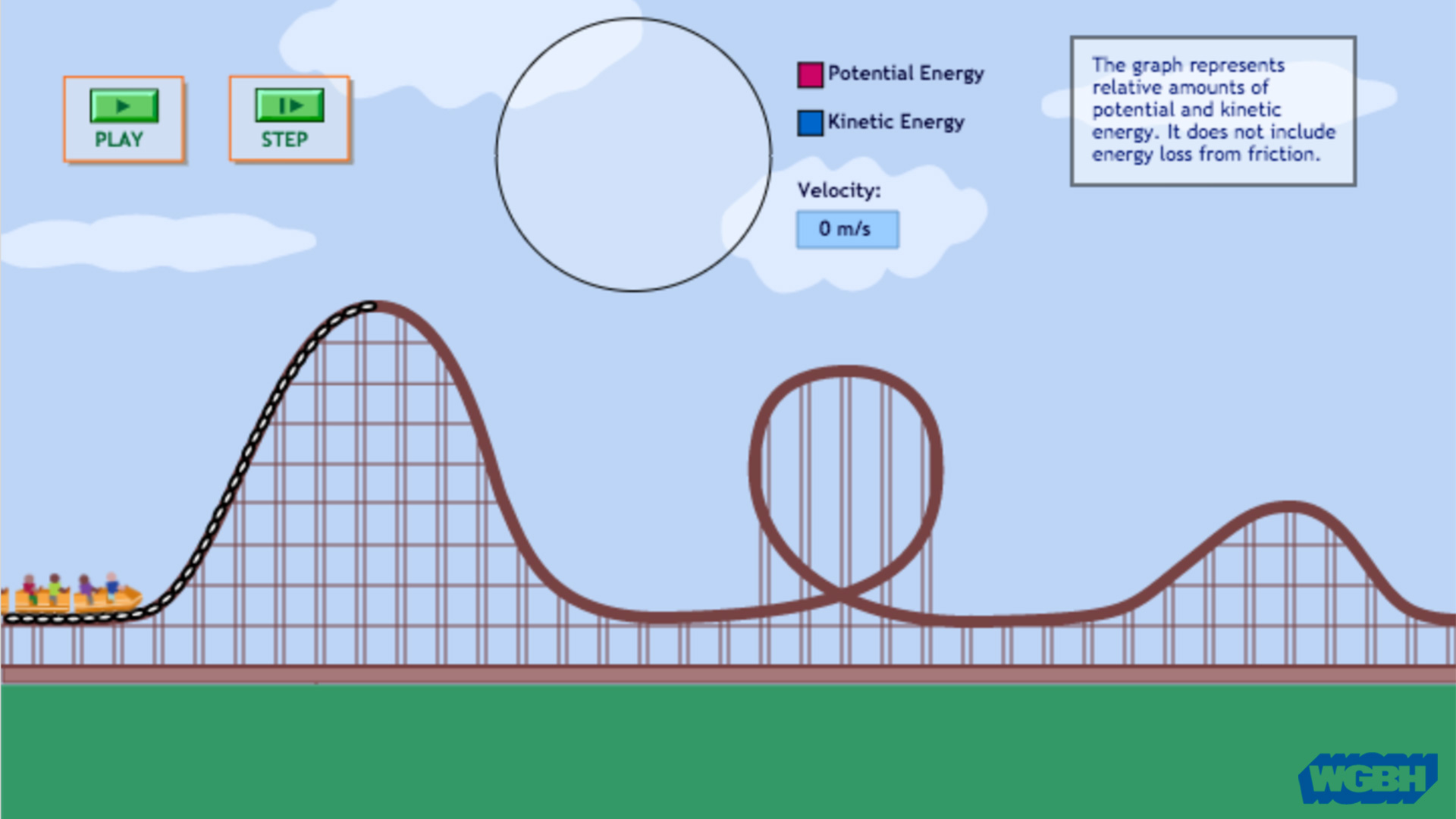 This interactive roller coaster ride produced by WGBH illustrates the relationship between potential and kinetic energy.
This interactive roller coaster ride produced by WGBH illustrates the relationship between potential and kinetic energy.
This interactive roller coaster ride produced by WGBH illustrates the relationship between potential and kinetic energy. As the coaster cars go up and down the hills and around the loop of the track, a pie chart shows how the relative transformation back and forth between gravitational potential energy and kinetic energy.
Although roller coasters have changed quite a bit since the ride first became popular, the basic design principles remain the same. Whether the ride consists of an old wooden track with a few hills and turns, or a modern steel track with a variety of corkscrews and loops, all roller coasters rely on the conservation of energy.
The law of conservation of energy states that within a closed system, energy can change form, but it cannot be created or destroyed. In other words, the total amount of energy remains constant. On a roller coaster, energy changes from potential to kinetic energy and back again many times over the course of a ride.
Access the full lesson plan online

By submitting your comments, you hereby give AZPM the right to post your comments and potentially use them in any other form of media operated by this institution.